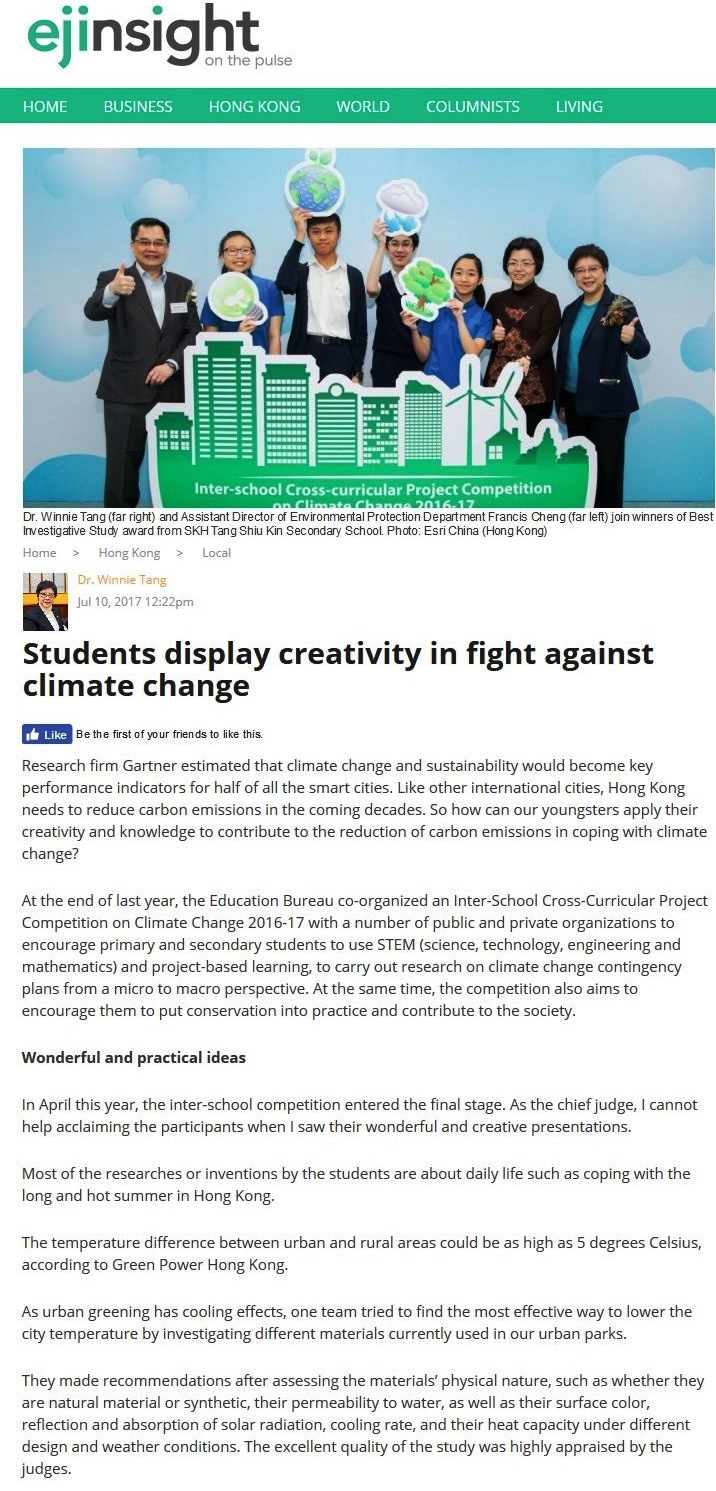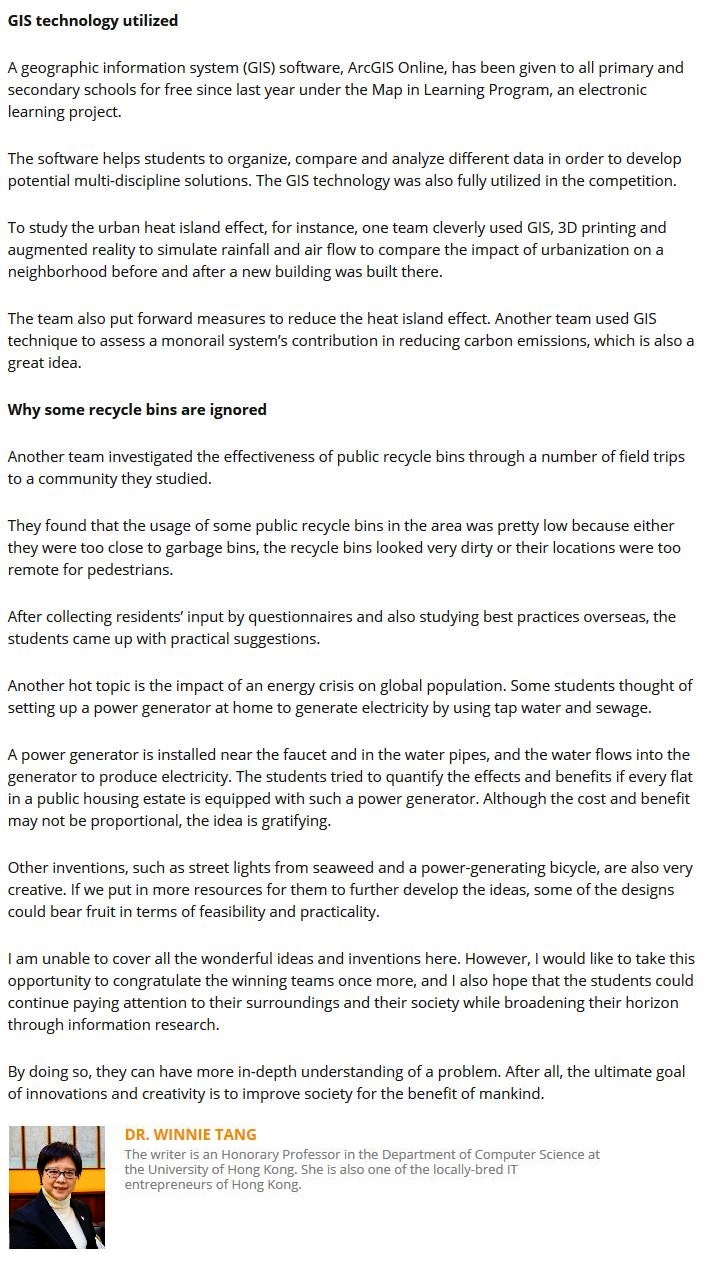網上版請按此


Students display creativity in fight against climate change
Research firm Gartner estimated that climate change and sustainability would become key performance indicators for half of all the smart cities. Like other international cities, Hong Kong needs to reduce carbon emissions in the coming decades. So how can our youngsters apply their creativity and knowledge to contribute to the reduction of carbon emissions in coping with climate change?
At the end of last year, the Education Bureau co-organized an Inter-School Cross-Curricular Project Competition on Climate Change 2016-17 with a number of public and private organizations to encourage primary and secondary students to use STEM (science, technology, engineering and mathematics) and project-based learning, to carry out research on climate change contingency plans from a micro to macro perspective. At the same time, the competition also aims to encourage them to put conservation into practice and contribute to the society.
Wonderful and practical ideas
In April this year, the inter-school competition entered the final stage. As the chief judge, I cannot help acclaiming the participants when I saw their wonderful and creative presentations.
Most of the researches or inventions by the students are about daily life such as coping with the long and hot summer in Hong Kong.
The temperature difference between urban and rural areas could be as high as 5 degrees Celsius, according to Green Power Hong Kong.
As urban greening has cooling effects, one team tried to find the most effective way to lower the city temperature by investigating different materials currently used in our urban parks.
They made recommendations after assessing the materials’ physical nature, such as whether they are natural material or synthetic, their permeability to water, as well as their surface color, reflection and absorption of solar radiation, cooling rate, and their heat capacity under different design and weather conditions. The excellent quality of the study was highly appraised by the judges.
GIS technology utilized
A geographic information system (GIS) software, ArcGIS Online, has been given to all primary and secondary schools for free since last year under the Map in Learning Program, an electronic learning project.
The software helps students to organize, compare and analyze different data in order to develop potential multi-discipline solutions. The GIS technology was also fully utilized in the competition.
To study the urban heat island effect, for instance, one team cleverly used GIS, 3D printing and augmented reality to simulate rainfall and air flow to compare the impact of urbanization on a neighborhood before and after a new building was built there.
The team also put forward measures to reduce the heat island effect. Another team used GIS technique to assess a monorail system's contribution in reducing carbon emissions, which is also a great idea.
Why some recycle bins are ignored
Another team investigated the effectiveness of public recycle bins through a number of field trips to a community they studied.
They found that the usage of some public recycle bins in the area was pretty low because either they were too close to garbage bins, the recycle bins looked very dirty or their locations were too remote for pedestrians.
After collecting residents’ input by questionnaires and also studying best practices overseas, the students came up with practical suggestions.
Another hot topic is the impact of an energy crisis on global population. Some students thought of setting up a power generator at home to generate electricity by using tap water and sewage.
A power generator is installed near the faucet and in the water pipes, and the water flows into the generator to produce electricity. The students tried to quantify the effects and benefits if every flat in a public housing estate is equipped with such a power generator. Although the cost and benefit may not be proportional, the idea is gratifying.
Other inventions, such as street lights from seaweed and a power-generating bicycle, are also very creative. If we put in more resources for them to further develop the ideas, some of the designs could bear fruit in terms of feasibility and practicality.
I am unable to cover all the wonderful ideas and inventions here. However, I would like to take this opportunity to congratulate the winning teams once more, and I also hope that the students could continue paying attention to their surroundings and their society while broadening their horizon through information research.
By doing so, they can have more in-depth understanding of a problem. After all, the ultimate goal of innovations and creativity is to improve society for the benefit of mankind.
Dr. Winnie Tang
Honorary Professor, Department of Computer Science, The University of Hong Kong